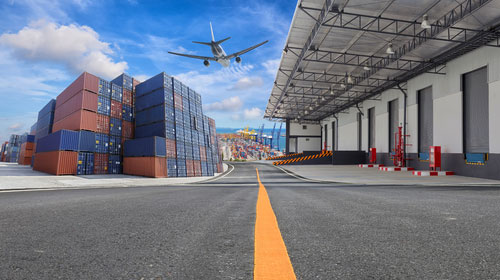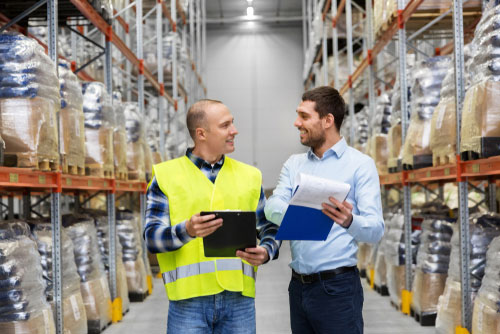Sustainability is a growing concern in companies and it’s changing the way business is done. For many different reasons, from consumer demand to cost savings or risk avoidance, the number of companies developing CSR and sustainability strategies is growing.
However, in many industries, the challenges to sustainability are external and dependant on suppliers across the supply chain. In fact, McKinsey says 90% of companies’ impacts on the environment come from supply chains. Let’s take a further look at The Economist’s report and how companies can improve sustainability across their suppliers.
Sustainability In Corporations Today
Sustainability is becoming the new normal and the number of companies adopting CSR strategies is on the rise. As new studies come out, it gets hard to deny, apart from the social and environmental benefits, the economic advantages of developing sustainability practices within businesses.
A McKinsey report says companies betting on sustainability improve processes, have higher growth rates and help to create value. The Economist’s essay underlines how sustainability allows companies to save money, avoid present and future regulation costs and improve their reputation. Moreover, regarding reputation, the authors state 85% of consumers are more likely to buy from a company with a reputation for sustainability than from a neutral company if their prices were equal. And a recent study from Unilever says 33% of consumers purchase products with sustainability in mind.
As Futerra’s CEO puts it, the big companies are shifting sustainability from the bottom to the top line. Many are becoming more sustainable and making changes within the bounds of their direct operational control. For instance, some businesses are installing solar panels, better managing their waste or reducing the amount of paper or electricity used. Yet, what’s not under a company’s direct control is often what’s most polluting and less eco-friendly. Retail, households, and beverage companies’ supply chains account for, respectively, 11.5, 19 and 24 times each company’s impact, according to The Economist. Moreover, when it comes to CO2 emissions, suppliers’ operations are responsible for 65% to 95% of a company’s total emissions. This is even truer in industries like retail, healthcare, telecoms or finance. So, how can companies help minimize these impacts?
- Related content:
- What are the 100 companies with the best CSR reputation?
- Companies perform better on the stock market if they have sustainability strategies
How To Improve Sustainability Across The Supply Chain

Big multinational companies are the ones betting harder on improving the sustainability of their operations. As they realize the importance and weight supply chains have, their priority is to find ways of holding their suppliers accountable. The report from The Economist brings several examples on how to do this. From developing a company’s technological systems to scoring suppliers, making public targets, working towards an inter-industry collaboration or giving awards, there are different possible approaches.
There are some companies that started applying sustainability scores using a supplier scorecard. This is a good way to distinguish and choose suppliers with similar quality and cost. Either by asking suppliers for life-cycle assessments or conducting surveys to find out their practices, it’s possible to estimate how eco-friendly suppliers are.
Giving awards to encourage behavioral changes are also a possible strategy. This is about awarding suppliers for their efforts on making changes that improve sustainability. Such efforts can be developing new materials made from waste or, for instance, making operations energetically more efficient. At the same time, publicly recognize suppliers’ work will encourage them to keep improving and it’ll work as an indirect recommendation for other companies searching for sustainable suppliers too.
Furthermore, other firms choose to make public targets. They claim that, for instance, they’ll only work with suppliers that use low carbon technologies or have waste reduction programs. Moreover, some companies also ask suppliers themselves to set reduction targets and encourage them to, for example, bet on renewable energies.
- Related content:
Proximity As A Key To Improving Suppliers’ Sustainability

Industry collaboration is also a good way for a company to track the sustainability of its suppliers. By creating a collaborative network with suppliers, intermediates or civil society, companies can help improve the industry. This is the case of the RSPO network on palm oil or the Better Cotton Initiative on cotton. The same can happen with packaging material – suppliers can be asked to start providing biodegradable or recycled materials.
Advising suppliers via two-way communication is another option. Companies can help suppliers by providing them with technology to control their operations or give them advice on sustainable alternative practices or products. Whatever the situation, suppliers can be encouraged to share their sustainability challenges so that both sides to come up with a better solution, together.
Reverse logistics is another possibility for managing suppliers’ sustainability. Encouraging them to receive the packaging they have previously supplied and ask them to reuse it or recycle it is an excellent strategy to reduce waste production and the demand for new materials.
- Related content:
The Barriers To Developing Sustainability Strategies Across Supply Chains

Although solutions exist and some companies, especially big multinational ones, are using them, this isn’t an easy process. The Economist’s report asked the 250 senior executives surveyed to share what were the biggest challenges to developing these sustainability approaches across their supply chains.
One of the strongest barriers is the difficulty to monitor complex supply chains and find the expertise to assess suppliers’ sustainability. Another reason is that there’s a lack of support from either the top management or government. These solutions are synonymous with higher costs (even if they mean costs saving on the long term) and it’s not always the case that the promise of increased reputation and growth opportunities unlock the funds needed.
Overall, the report concludes most companies, especially in Europe and the US are integrating sustainability in their practices. In fact, most of the executives surveyed said both sustainability and profit are equally important, while 25% choose sustainability alone vs. 14% who choose only profit. Yet, the phenomena of risking money on the short-term for long-term gains is still hard to overcome. Sustainability experts and consultants will have a very important role in providing and helping companies develop more detailed insights on the benefits of improving sustainability across supply chains and helping them to monitor progress.
Image credits to wholesale on Shutterstock, logistics on Shutterstock, cargo plane on Shutterstock and project creation on Shutterstock

